Notes
Deep Dive for Photo Editors: Ariel Sharon and the Politics of the Slideshow Retrospective
Last month, we looked at the tribute photos of Nelson Mandela and the very different way he was represented between the Western and African press. With the passing of Ariel Sharon, what we’re interested in this time are political nuances in the photo galleries summarizing his career.
Because there is much more material here than we can wrap our arms around, we encourage you to use this post as a starting point and compare for yourself the 15 photo gallery at Al Jazeera; the 35 photo slideshow at Reuters; the 19 photos at The New York Times; the 12 photos at Bloomberg; the 20 photos at MSNBC and the 25 photos at the Wall Street Journal. We’re curious how you analyze and compare them both visually and textually, and encourage your thoughts below.
As a single point of comparison, however, I was interested in how the various slideshows chose to treat one of the most controversial acts of Sharon’s life, his provocative visit to the Temple Mount on September 28, 2000 during his campaign for Premier. Sharon’s stepping onto the ground of the sacred Muslim site is widely recognized as having incited the Palestinians and triggered the start of the second Intifada. In looking at these slideshows, what’s also interesting is if they also document Sharon’s visit to the Wailing Wall in 2001, right after his election victory, and the extent to which one event — the visit to the Temple Mount and the holy Jewish Western (or “Wailing”) Wall directly adjacent the Temple Mount — could be confused or, perhaps, seen to either compliment or replace the other.
Taking a look at the slideshows…
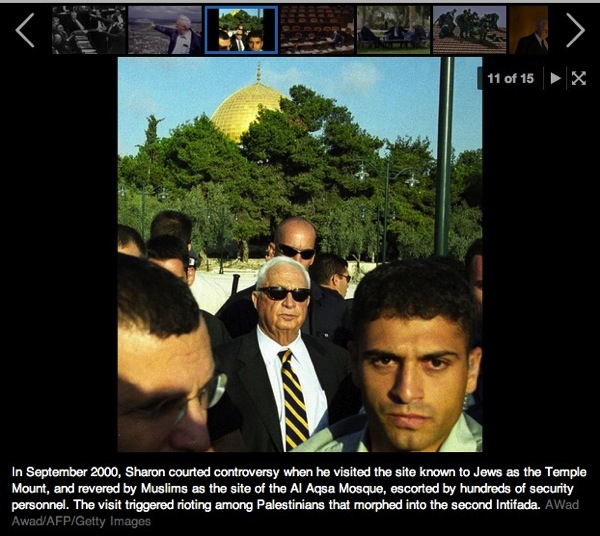
Al Jazeera offers this image from the Temple Mount, the photo showing the Al Aqsa Mosque in the background and a look of tension on the face of this Israeli military officer. Their slideshow offers no image of the Wailing Wall visit.
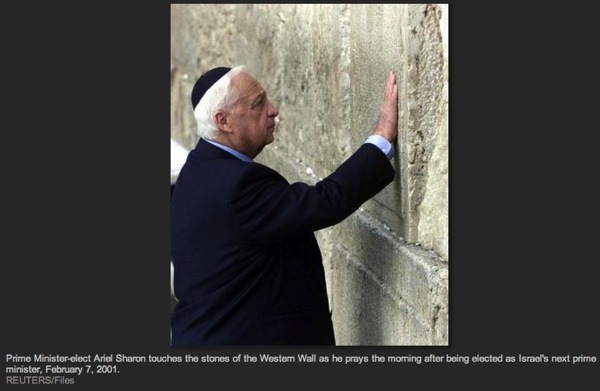
Reuters, on the other hand, offers no image from the Temple Mount visit but it does offer this photo the next year from the Western Wall.
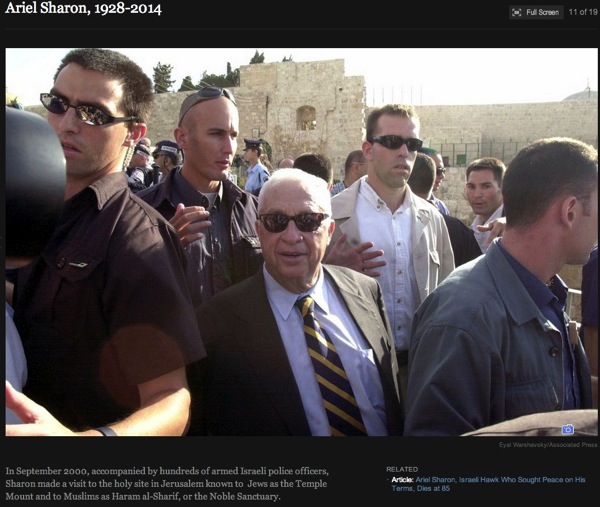
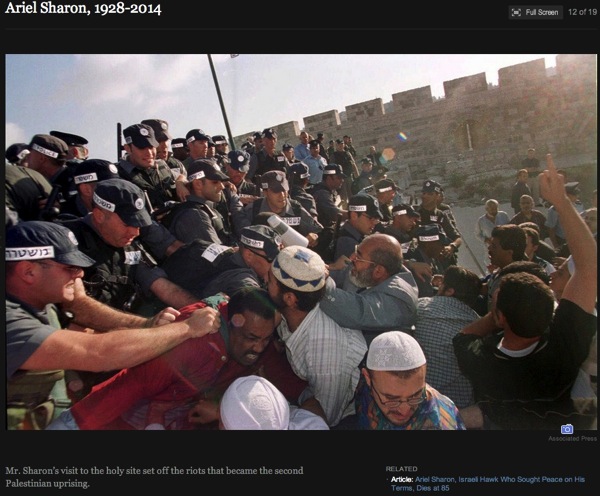
The New York Times, whether accentuating the political significance of the Temple Mount visit, the dramatic imagery, or the combination of both, actually offers two photos from the Temple Mount visit, the second highlighting the repercussion, as you can see. Their gallery does not address the post-election visit to the Wailing Wall.
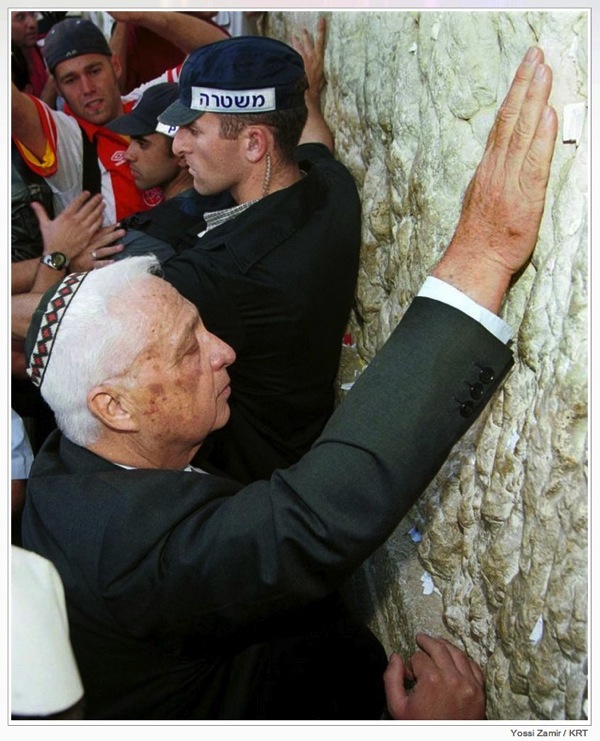
In an odd editing decision, MSNBC does depict Sharon’s visit to the Temple Mount but not with a photo that shows him on Muslim sacred ground. Instead (and confusingly, in my estimation), they post a photo of him at the Western Wall surrounded by Israeli security forces and media.
The caption reads:
Ariel Sharon, leader of the then-opposition Likud Party, prays at the Western Wall following a visit to the Temple Mount in Jerusalem, on Sept. 28, 2000. His visit to the disputed holy site provoked rioting among Palestinians, and marked the start of the second Palestinian Intifada, or uprising. Sharon contended that the uprising was planned in advance.
With his eyes closed in an exceedingly reverent pose, his hand palming the wall, one (given the incredibly well known events of the day, and also knowing his political agenda) would almost infer a claim of possession and/or divine authority over not just the wall, perhaps, but the entire site. Note also how the caption ends with Sharon’s interpretation of the violence that followed.
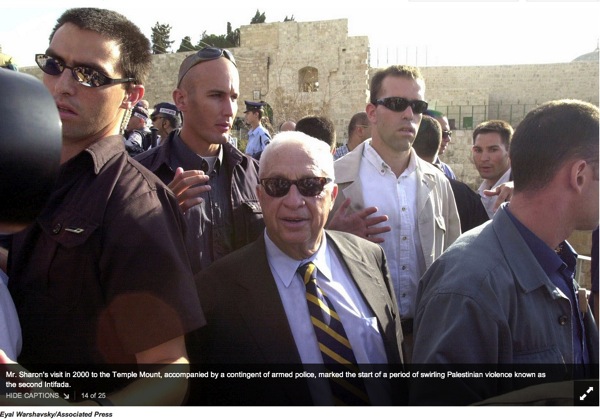
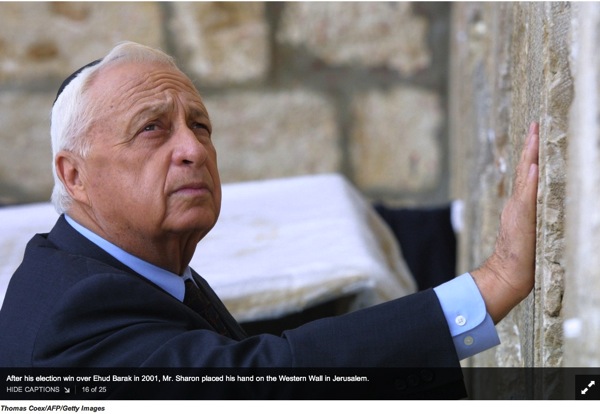
The Wall Street Journal captures both events (using same photo that from the Temple Mount that the New York Times used).
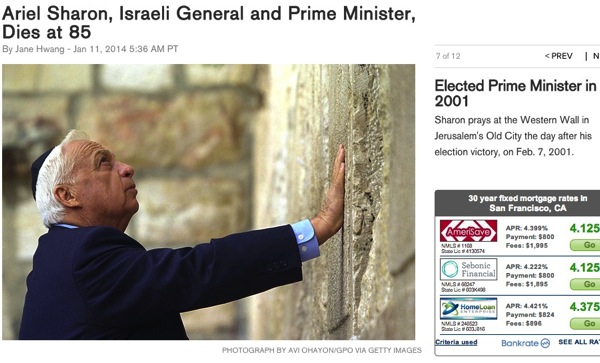
Bloomberg doesn’t offer a photo from the Temple Mount but it offers this post-election image from the Wailing Wall.
As you click through and examine the rest of the slideshows, you’ll find other obvious difference/biases. It’s interesting, for example, to look at how, and to what extent the slideshows recognize the Sabra and Shatila massacres in ’82 carried out by Lebanese Christian militia enabled by the Israelis. While many of the slideshows represent the Israel investigative proceedings that found Sharon culpable, Al Jazeera was the only one to show bodies.
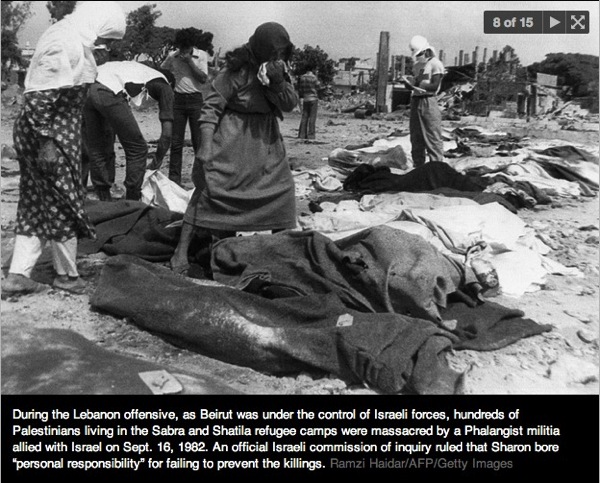
To the extent media can depart from a core baseline of images and milestones, I have to leave you with the most extreme outlier, not just for its content but its date. It’s from the Bloomberg slideshow and shows Sharon visiting with Rudy Guiliani at Ground Zero. (The caption reads: “World Trade Center, New York, 2001, Sharon and New York City Mayor Rudolph Giuliani look over the wreckage of the World Trade Center site on Nov. 30, 2001.”)
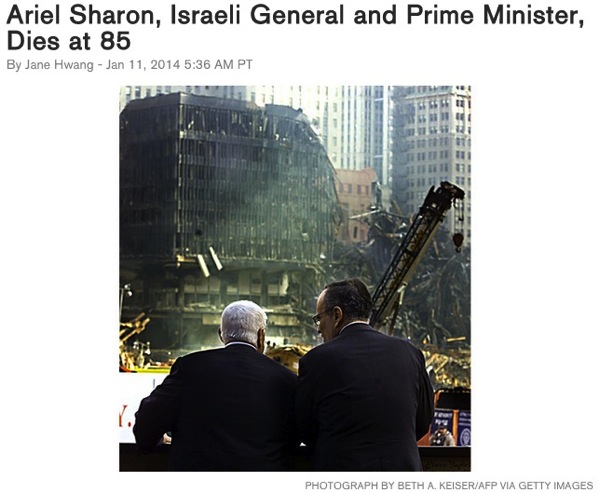
As an image asserting who the good guys were, it’s likely the most provocative editing decision of these Sharon retrospectives.
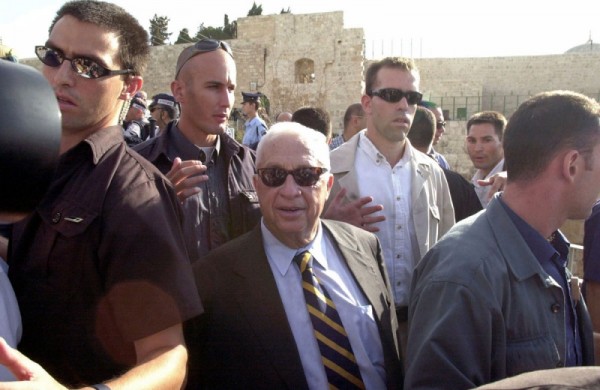
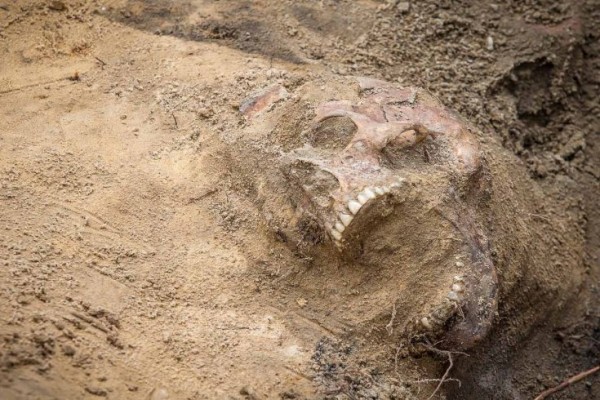
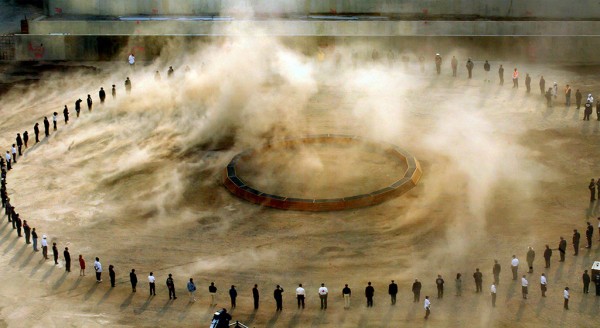
Reactions
Comments Powered by Disqus